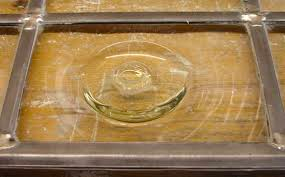-
Posts
13,351 -
Joined
-
Last visited
Content Type
Profiles
Forums
Gallery
Events
Everything posted by druxey
-
Welcome aboard, Eindride!
-
Bienvenue ici, Alain!
-
Sweet, Michael! So nice to see this coming together.
- 2,215 replies
-
Very nice, but I'd be concerned about the short grain on the futtocks, the way you have them oriented on the sheet. Placed on the diagonal would be better.
- 589 replies
-
- le gros ventre
- cargo
-
(and 1 more)
Tagged with:
-
Looks easily recoverable. Use a little scrap piece glued under the break, then glue the end piece on over the reinforcing piece and transom.
- 38 replies
-
- Model Shipways
- Shipwright Series
- (and 2 more)
-
Welcome aboard!
-

HMS SUSSEX by KarenM - FINISHED - 1:48
druxey replied to KarenM's topic in - Build logs for subjects built 1501 - 1750
Generally the largest panes at the time were no more than about 9" by 12" - often smaller. A molten ball of glass was spun into a disc. After cooling it was cut up into panes, so-called 'crown glass'. The central portion attached to the pontil yielded the cheapest piece, sometimes seen in old windows as the 'bullseye'. -

HMS SUSSEX by KarenM - FINISHED - 1:48
druxey replied to KarenM's topic in - Build logs for subjects built 1501 - 1750
Too many entries to click 'like' on, so consider them all liked! One small point: the window frames would look much better if you squared up the corners. All the other carved work is lovely. -

HMS SUSSEX by KarenM - FINISHED - 1:48
druxey replied to KarenM's topic in - Build logs for subjects built 1501 - 1750
Lovely work. -
Modifications look very good, Marc! It's surprising how a small change in head angle dramatically changes the general impression.
- 2,699 replies
-
- heller
- soleil royal
-
(and 9 more)
Tagged with:
-
I had just read an article (elsewhere) in praise of jigs when I saw your preparatory work here. I'm sure the time you took to make this is well invested.
- 508 replies
-

Technical drawings & Dutch shell first
druxey replied to Jules van Beek's topic in Nautical/Naval History
Thank you for explaining the five division scale, Jules. I also appreciated seeing the enlargement of the left side of Rembrandt's painting showing the pages - a detail I'd not really seen before. -

Technical drawings & Dutch shell first
druxey replied to Jules van Beek's topic in Nautical/Naval History
Thank you, Jules. I suspected that the 11 divisions were for Amsterdam feet/inches, but the five divisions on the right end of the scale? What do they signify, please? -
Sweet! Congratulations on a great finish.
- 21 replies
-
- Muscongus Bay Lobster Smack
- Model Shipways
- (and 2 more)
-

Technical drawings & Dutch shell first
druxey replied to Jules van Beek's topic in Nautical/Naval History
This is an interesting thread, Jules. Could you explain the scales on the drawings that are divided into 11 and 5 parts, please? -
Anyone who is serious about period rigging should have a copy of Lees' book as recommended by Allan. It is an invaluable help.
-
Yes, grain can change direction unexpectedly. But you'll be alert for that now.
- 62 replies
-
- First Build
- Grand Banks Dory
-
(and 2 more)
Tagged with:
-
48 hours? That must be an extremely high resolution!
- 6 replies
-
- swedish navy
- Destroyer
-
(and 2 more)
Tagged with:
-
Congrats on reaching the finishing line, Mark! Well done.
- 505 replies
-
- vanguard models
- Sphinx
-
(and 1 more)
Tagged with:
About us
Modelshipworld - Advancing Ship Modeling through Research
SSL Secured
Your security is important for us so this Website is SSL-Secured
NRG Mailing Address
Nautical Research Guild
237 South Lincoln Street
Westmont IL, 60559-1917
Model Ship World ® and the MSW logo are Registered Trademarks, and belong to the Nautical Research Guild (United States Patent and Trademark Office: No. 6,929,264 & No. 6,929,274, registered Dec. 20, 2022)
Helpful Links
About the NRG
If you enjoy building ship models that are historically accurate as well as beautiful, then The Nautical Research Guild (NRG) is just right for you.
The Guild is a non-profit educational organization whose mission is to “Advance Ship Modeling Through Research”. We provide support to our members in their efforts to raise the quality of their model ships.
The Nautical Research Guild has published our world-renowned quarterly magazine, The Nautical Research Journal, since 1955. The pages of the Journal are full of articles by accomplished ship modelers who show you how they create those exquisite details on their models, and by maritime historians who show you the correct details to build. The Journal is available in both print and digital editions. Go to the NRG web site (www.thenrg.org) to download a complimentary digital copy of the Journal. The NRG also publishes plan sets, books and compilations of back issues of the Journal and the former Ships in Scale and Model Ship Builder magazines.




